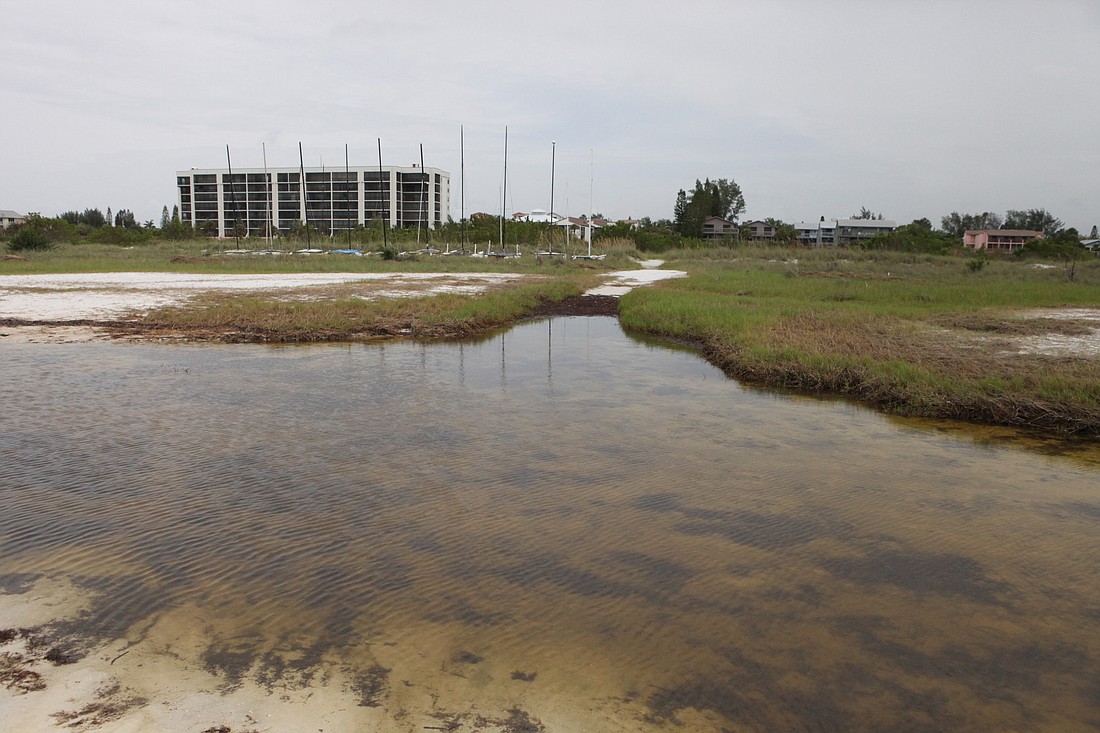- November 28, 2024
-
-
Loading

Loading

Dark red clumps of seaweed are at the apex of a four-way balancing act between the best interests of humans, animals, property owners and government. Tropical Storm Debby deposited more than 200 tons of the stuff on Sarasota County beaches, and things have gone wobbly on Siesta Key.
“No human can go to this beach now,” wrote one Turtle Beach property owner Aug. 3, in an email to Sarasota County commissioners. “If you want to save money by not cleaning the beach, do not call it a public beach, and just close it down.”
Sarasota County has removed more than 140 tons of seaweed from beaches since July 1, according to a news release. That was accomplished while bending to the needs of endangered sea turtles and snowy plovers, avoiding days with heavy beach traffic and squeezing an already strained budget.
The property owners’ frustrations aren’t unfounded. Seaweed brings to shore thousands of tiny-to-microscopic marine organisms along for the ride, before frying in the sun.
“We don’t have hard corals,” said Sarasota County Parks and Recreation Manager George Tatge at an Aug. 2 meeting of the Siesta Key Association. “But, the clumps of seaweed are like floating coral reefs.”
But, once the salty hitchhikers start decomposing, tourists start running.
Dawn Bear, general manager of Tropical Beach Resorts on south Siesta, said her vacation rentals have an annual volume in excess of 11,000 visitors. She has, on average, three days to convince them to return for their next vacation, so she grabbed five employees and started clearing piles of algae. “I wanted to make the No. 1 beach look like the No. 1 beach,” she said.
It’s a problem any beachfront rental property owner faces, and with the glow of Stephen P. Leatherman’s No. 1 ranking fading, securing return visits is crucial.
But, with revenues stretched thin for Sarasota County, along with a shortage of regular staff, the cost of seaweed cleanup is under scrutiny.
The problem for tourists trying to avoid unsightly the saltwater plants is that it takes time for seaweed to dry out, and dry seaweed is lighter, which in turn cuts weight-based landfill fees.
“We do our best to get it to the landfill as quickly as possible,” Tatge said.
However, there are stringent guidelines set by the Florida Department of Environmental Protection for nearly every coastal activity, seaweed removal included. Sarasota County acquires an annual permit for raking the red algae, which is a vital source of food for marine and shoreline creatures. That restricts county workers to roughly a 25-foot distance from the water line for raking the clumps of seaweed.
Further, Debby’s storm surge uprooted stakes marking sea turtle nests, along with leaving clumps of algae. With no way of spotting nest locations, the DEP altered Sarasota County’s permit by cutting the restricted area in half until Sept. 8. Officials will reassess the regulation at that point, but sea turtle season doesn’t end until Oct. 31.
About 30% of tourist taxes, which are charged for weekly rental properties, have come from Siesta Key since October, giving the county an incentive to quickly clear Siesta Key beaches. “In the past, (the county) hasn’t been very responsive,” Bear said. She received calls from Sarasota County Coastal Resources Director Laird Wreford and Virginia Haley, CEO of Visit Sarasota County, with advice or education about the problem.
Siesta Key Chamber of Commerce Executive Director Kevin Cooper met with Bear to share what other rental properties are doing.
“I feel like I have a huge support system behind me,” Bear said.
